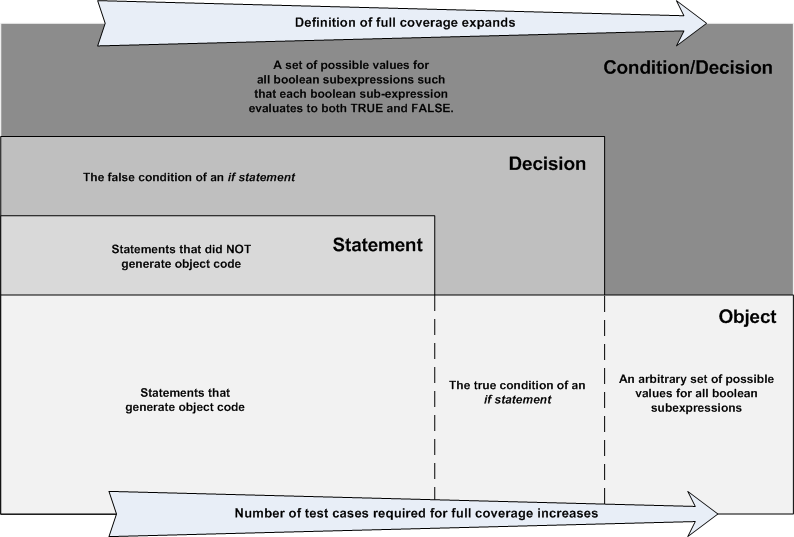| Version 9 (modified by GlennHumphrey, on 09/10/09 at 22:20:52) (diff) |
|---|
Coverage Analysis Theory
Table of Contents
The subject of Code Coverage Analysis is broad and has been written about many times over. This background material is not intented to summerize or rehash what can be read elsewhere. Instead, the focus here will be on the aspects of Code Coverage Analysis as they pertain to the RTEMS Coverage Analysis effort.
The ultimate goal of Code Coverage Analysis is to ensure that a test suite adequately tests a particular body of code. In order to achieve this goal, several different coverage criteria may have to be examined. Let's consider the following criteria:
- Statement Coverage - Has each line of the source code been executed?
- Decision Coverage (also known as Branch coverage) - Has each control structure (such as an if statement) evaluated both to true and false?
- Condition Coverage - Has each boolean sub-expression evaluated both to true and false (this does not necessarily imply decision coverage)?
- Modified Condition/Decision? Coverage (MC/DC) - Has every condition in a decision taken on all possible outcomes at least once? Has each condition been shown to affect that decision outcome independently?
- Object Coverage - Has each line of generated assembly been executed?
In order to illustrate what is covered by each of the different criteria, consider the following simple example
if (x || y) do something
along with its psuedo object code
cmp x, 0 branch if FALSE to do something cmp y, 0 branch if TRUE around do something do something instructions
Statement Coverage
Statement coverage verifies that each line of source code in a source file is represented by generated assembly and that that assembly code is exercised.
Decision Coverage
TBD
MC/DC
This is also known as Modified Condition/Decision Coverage.
Object Coverage
TBD
Criteria Relationships
Each of these criteria can be used independently to analyze the code in question. Application of any one criteria will likely improve the test suite to some degree albeit at some cost. Examination of the criteria collectively, shows that there are clear relationships between the different criteria as shown in the picture. The completness of the test suite increases as it satifies first Statement Coverage and then Decision Coverage and finally MC/DC. If the test suite satisfies Statement Coverage, it will partially satisfy Decision Coverage and MC/DC. If the test suite satisfies Decision Coverage, it will completely satisfy Statement Coverage and partially satisfy MC/DC. There is also a complexity relationship where Statement Coverage is the least complex to satisfy and MC/DC is the most complex to satisfy.
<br style="clear: both" />
Attachments (1)
-
CoverageCategories.png (31.5 KB) - added by Amar Takhar on 11/23/14 at 05:06:27.
Imported from old wiki.
Download all attachments as: .zip
![[RTEMS Logo]](/images/logo.png)
